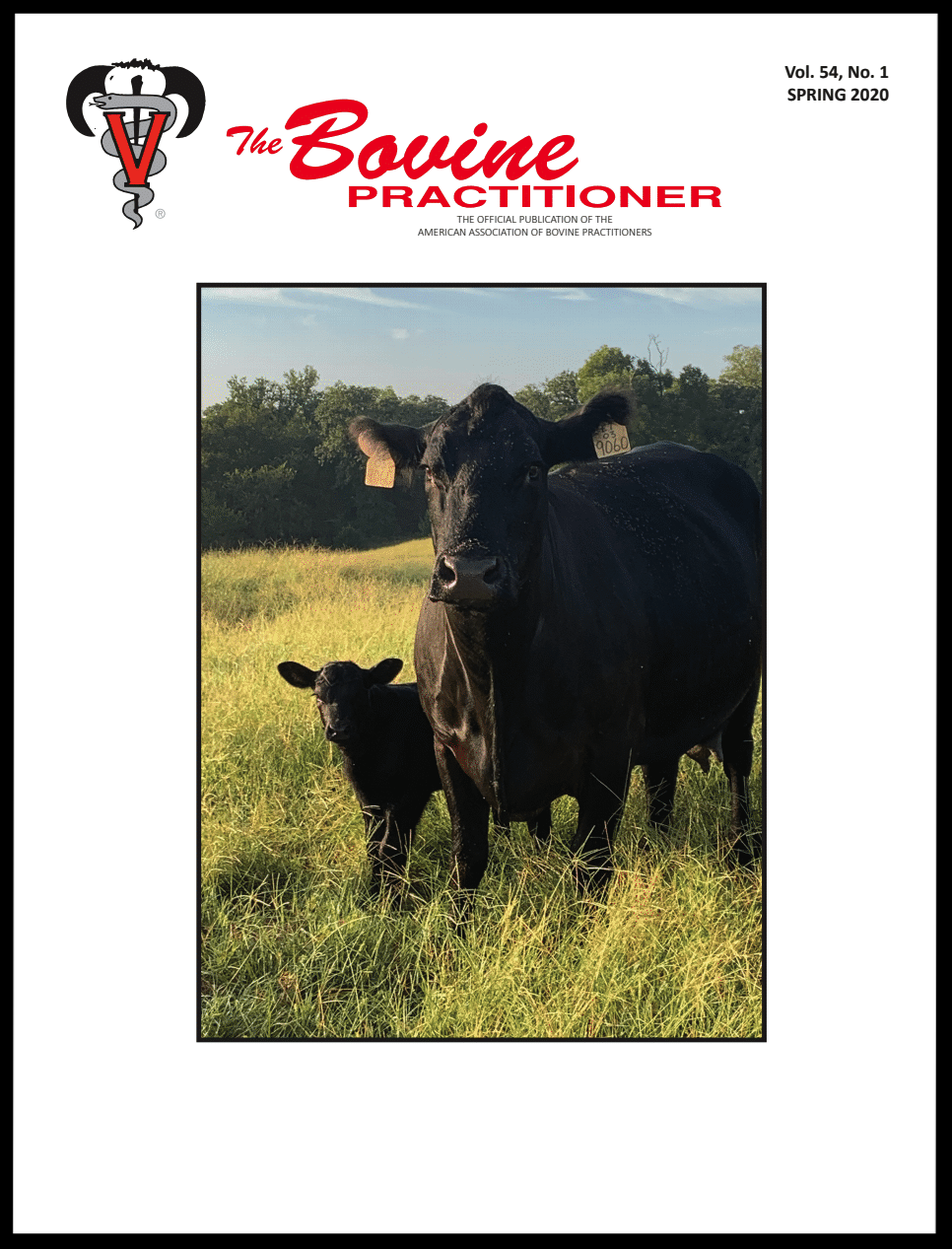Systemic and local immune responses of weaned beef calves vaccinated post-transportation and at the time of a mild respiratory tract infection
DOI:
https://doi.org/10.21423/bovine-vol54no1p58-65Keywords:
bovine, mucosal immunity, vaccination, stress, shippingAbstract
To examine the effects of transport stress and concur-rent respiratory infection on bovine vaccine responses, 75 previously weaned beef calves were randomly assigned to 1 of 3 treatments (n=25/group). Group 1 calves were not transported, but were vaccinated (NTV). Both Groups 2 (vaccinated TV) and 3 (not vaccinated TUV) were transported for 12 h. Twelve h after transport, calves in NTV and TV groups were vaccinated intranasally with modified-live bovine respiratory syncytial virus (BRSV), bovine herpesvirus −1 (BHV-1), and parainfluenza virus type 3 (PI3V), and subcutaneously with modified-live bovine viral diarrhea virus (BVDV) types 1 and 2 vaccine with Mannheimia hemolytica (Mh) leukotoxoid vaccine. Nasal secretions and serum were collected pre- and post-vaccination for measurement of nasal interferon alpha, beta, and gamma, IgA to BHV-1 and BRSV, and serum neutralizing (SN) titers to BHV-1, BRSV, and BVDV types 1 and 2.
At vaccination some calves had nasal discharge and fever. Pre-vaccination nasal swabs, tested for respiratory viruses, were negative. During the 21-d study, 6 calves developed BRD and eventually recovered. BHV-1 and BVDV 1 and 2 SN titers were significantly higher in vaccinated than nonvaccinated calves on d 14 and 21. BVDV2 titers were significantly higher in TV than NTV. Vaccination stimulated systemic, but not mucosal, antibody responses. Cattle can mount a humoral response to vaccination in spite of transport and mild respiratory disease.






